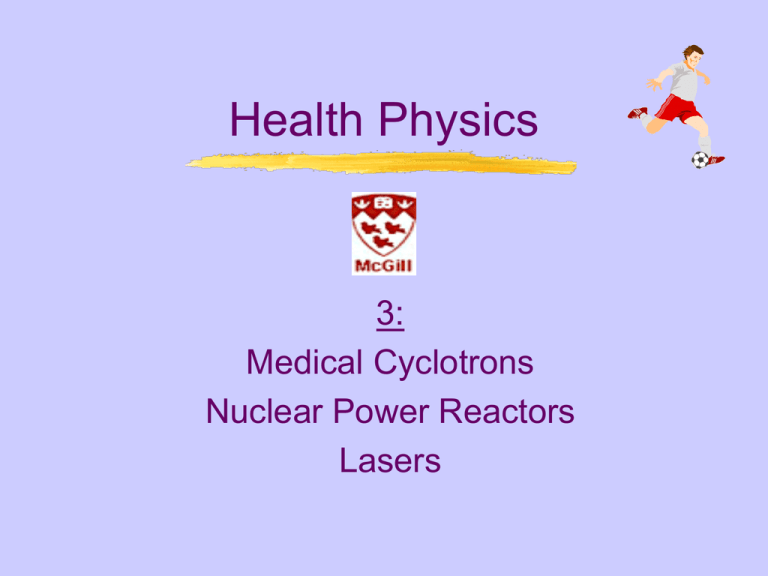In the expansive field of nuclear physics, two pivotal apparatuses stand out for their unique attributes and functionalities: cyclotrons and nuclear reactors. Both are integral to advancing technology and enhancing our understanding of nuclear processes, yet their operational principles, applications, and implications diverge sharply. This discourse delineates their distinctions while probing the intricate facets that yield their classification as marvels of modern science.
Operational Principles
Cyclotrons operate through the acceleration of charged particles, typically protons or ions, utilizing a strong magnetic field and a rapidly varying electric field. The fundamental architecture comprises two D-shaped electrodes, known as “dees,” positioned in a vacuum chamber. Here, charged particles are introduced and spiraled outward, gaining kinetic energy as they traverse the electric field between the dees, propelled further by the gradient of the magnetic field. The cyclotron’s velocity thus increases exponentially until particles reach sufficient energy to escape through a designated exit port, which allows them to be directed towards a target or detector.
Conversely, nuclear reactors function by inducing controlled nuclear fission reactions, wherein heavy atomic nuclei, such as Uranium-235 or Plutonium-239, undergo splitting when bombarded by neutrons. The reactor core houses fuel rods enveloped in coolant, which not only absorbs the heat generated from fission but also facilitates the conversion of this thermal energy into usable electrical energy through turbines. Critical to this process is the use of control rods, which regulate the rate of fission and, consequently, the reactor’s power output. In essence, cyclotrons energize particles, while reactors govern energy release through a delicate balance of nuclear interactions.
Applications
The applications of cyclotrons primarily lie within the realm of medicine and research. Medical cyclotrons are crucial in the production of radionuclides for positron emission tomography (PET) scans, a non-invasive imaging technique that has revolutionized diagnostic medicine. These machines generate isotopes such as fluorine-18, which are subsequently used in pinpointing malignancies and assessing metabolic functions. Moreover, cyclotrons are employed in fundamental physics research, enabling experimentalists to probe the properties of nuclear matter, establish new particles, and elucidate force interactions at subatomic scales.
Nuclear reactors, on the other hand, serve a broader spectrum of purposes. They are utilized in commercial power generation, providing a significant portion of electricity worldwide. The heat produced from fission not only drives turbines to generate electricity but also finds utility in district heating and industrial applications. Additionally, reactors play an essential role in research and development; for instance, research reactors enable scientists to explore materials behavior under neutron irradiation, sustain nuclear physics experiments, and yield isotopes for industrial and medical use. The dualistic nature of reactors as both energy producers and research facilitators underscores their substantial impact on global infrastructure.
Safety Considerations
Safety is paramount in the discourse surrounding both cyclotrons and nuclear reactors, albeit for different reasons. Cyclotrons, while generally deemed safe, require stringent protocols due to the high-energy particles they generate, which can result in secondary radiation. Proper shielding, operational protocols, and monitoring systems are imperative to prevent inadvertent exposure to radiation. Furthermore, the materials used in construction must withstand the rigors of repeated particle bombardment, ensuring structural integrity over time.
In stark contrast, the safety concerns associated with nuclear reactors are exponentially greater, reflective of their complex operational environment and the potential for catastrophic failure. Incidents such as Chernobyl and Fukushima serve as grim reminders of the consequences of negligence or failure in safety protocols. Core meltdowns, radiation leaks, and waste management remain paramount concerns that necessitate robust engineering, rigorous safety standards, and ongoing training for personnel. Consequently, the regulatory landscape governing reactor operations is multifaceted and dynamic, encompassing national and international frameworks to mitigate risks.
Technological and Research Implications
The technological innovations stemming from both cyclotrons and reactors are profound. Cyclotrons have catalyzed advancements in particle physics and materials science. The ability to accelerate particles to relativistic speeds has illuminated the intricacies of strong and weak nuclear forces, contributing to the Standard Model of particle physics. Furthermore, developments in beam optics and magnetic confinement continue to propel advancements in accelerator technology, ensuring their relevance in contemporary research.
Nuclear reactors, similarly, have precipitated significant technological advancements. The integration of fast breeder reactors and thorium reactors exemplifies the ongoing evolution of nuclear technology, with an increasing focus on sustainability and efficiency. Research in reactor design has also fostered advancements in safety systems and waste management methodologies, underscoring the need for continuous innovation in a sector marked by its public perception and environmental implications.
Conclusion
In summation, cyclotrons and nuclear reactors embody the dichotomous yet complementary nature of modern scientific inquiry and application. While cyclotrons exemplify the pursuit of knowledge through particle acceleration, reactors epitomize the harnessing of nuclear fission for energy production. Their differences, spanning operational mechanics, applications, safety considerations, and technological implications, highlight the complexity and richness of nuclear technology. As we delve further into these arenas, the intrigue surrounding their respective marvels continues to fuel the human endeavor towards boundless exploration and sustainable energy solutions.












